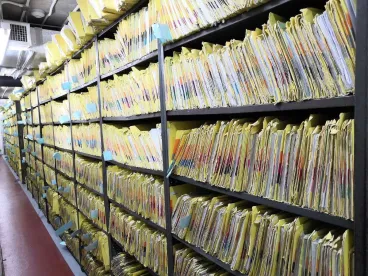Summary
On July 7, 2023, the Centers for Medicare and Medicaid Services (CMS) released the proposed rule Hospital Outpatient Prospective Payment System: Remedy for 340B-Acquired Drugs Purchased in Cost Years 2018-2022 to address how the agency will restore payments to hospitals affected by a 2018 decision to cut reimbursement amounts on 340B drugs to certain hospitals paid under the Outpatient Prospective Payment System (OPPS). This rule is responsive to a Supreme Court of the United States opinion finding that the 2018 payment cuts were not consistent with CMS authority to set Medicare payments to hospitals for outpatient drugs.
Comments on the proposed rule are due September 5, 2023.
Key Takeaways
- CMS estimates that 1,649 340B hospitals were paid at the lower 340B payment for drugs under OPPS from CY 2018 through September 27, 2022 (the date on which CMS restored reimbursement for 340B drugs to the full OPPS rate).
- CMS proposes to refund hospitals that had payments reduced with a one-time lump sum payment intended to account for the difference in what was paid to the hospitals and what should have been paid had the cut not been implemented. CMS estimates that the total payments will be $9 billion.
- CMS will not apply interest to these remedy payments.
- CMS estimates that hospitals were paid $7.8 billion more for non-drug items and services from CY 2018 through September 27, 2022, because of implementation of the cuts in a “budget neutral” manner that increased rates on all other OPPS items and services to all hospitals. To maintain budget neutrality for the payment cuts remedy, CMS proposes to offset the $7.8 billion by adjusting the OPPS conversion factor by -0.5% starting in CY 2025. CMS proposes to continue making this adjustment until the full $7.8 billion is recouped, which CMS estimates will take 16 years.
- The $9 billion lump sum payment amount and the $7.8 billion offset are different because the budget neutrality adjustment applied to increase payments for non-drug items and services underestimated the actual amount of the reductions in payment for 340B drugs.
- In order to hold beneficiaries harmless as to cost sharing obligations associated with the remedy, CMS proposes to include the value of that uncollected cost-sharing in the $9 billion lump sum payment to 340B hospitals.
- CMS aims to make the lump sum payments by the end of CY 2023 or the beginning of CY 2024, after this rule has been finalized and instructions have been given to Medicare Administrative Contractors (MACs), which will then administer the payments.
Background
Beginning in CY 2018, CMS decreased Medicare Part B payments to most 340B hospitals paid under OPPS for separately payable drugs purchased through the 340B program and dispensed to hospital outpatients. Previously, CMS paid average sales price (ASP) plus 6% for these drugs. Effective January 1, 2018, CMS reduced reimbursement to ASP minus 22.5%, representing an almost 30 percentage point reduction in payment. Certain 340B hospitals paid under OPPS were exempt from the payment reduction, including rural sole community hospitals, prospective payment system (PPS) exempt children’s hospitals and PPS-exempt cancer hospitals. CMS states that 1,649 hospitals were affected by this policy
The CY 2018 OPPS final rule also required hospitals subject to the 340B payment reduction to report modifier JG (drug or biological acquired with 340B drug pricing program discount) to identify if a drug was acquired under the 340B program. All other 340B hospitals were required report an informational modifier TB for drugs acquired through the 340B program.
CMS implemented the 340B payment reduction in a budget-neutral manner, such that the Medicare program savings generated from the cuts in 340B drug payments were used to increase payments for all other items and services paid to all hospitals under OPPS. Accordingly, hospitals not subject to the 340B payment reduction—and even some that were subject to the payment reduction—realized substantial payment increases during the time the 340B payment reductions were in effect.
CY 2023 OPPS Final Rule
Litigation brought by hospitals subject to the payment cuts was ultimately heard by the Supreme Court, which issued a ruling invalidating the 340B payment cuts. Consistent with this ruling, in the CY 2023 OPPS final rule, CMS restored payments for 340B drugs under OPPS to the full ASP plus 6% rate. CMS did not, however, address a remedy for CY 2018–2022 payments at that time. This proposed rule now addresses that remedy.
Proposed Rule Remedy
Lump Sum Payment to Affected Hospitals
This proposal includes multiple aspects of note. First, CMS must restore payments to affected hospitals for the period when the 340B payment reductions were in effect. To resolve this aspect, CMS proposes to make a one-time lump sum payment to 340B hospitals for the amounts they would have received had the reductions in payments not occurred. CMS estimates these repayments will total $9 billion in the aggregate and will be made to 1,649 340B hospitals.
To arrive at the total $9 billion repayment amount, CMS calculated the difference between what affected hospitals were paid for 340B drugs (ASP1 minus 22.5% or an adjusted wholesale acquisition cost2 or average wholesale price3 amount) during the period the cuts were in place and what they would have been paid had the 340B payment policy not applied. As part of this calculation, and in order to protect Medicare beneficiaries from additional cost sharing obligations in connection with the increase in payments for 340B drugs, CMS also proposes to include the amounts due from increased beneficiary cost sharing in the calculation of the $9 billion repayment amount.
CMS estimates that from CY 2018 through September 27, 2022, affected hospitals received $10.5 billion less in 340B drug payments than they would have otherwise received. However, CMS also estimates that hospitals have already been paid $1.5 billion as the result of claims reprocessing to the full OPPS payment rate and associated beneficiary cost sharing that has already occurred for certain claims with dates of service in CY 2022. This $1.5 billion is accounted for in the agency’s calculation of remedy payments and excluded from the lump sum payments that will be repaid as a result of this policy change.
CMS proposes to require that MACs issue the one-time lump sum payments to affected 340B hospitals within 60 calendar days of receiving the payment instruction from CMS. CMS specifically requests comment on the 60-day payment timeframe.
If the rule is finalized as proposed, CMS aims to make these additional payments by the end of CY 2023 or the beginning of CY 2024, after the MAC instructions for each affected 340B covered entity hospital have been issued.
Budget Neutrality
The Social Security Act requires that any payment adjustments to the OPPS must be done in a budget neutral manner. This means any decreases in payment must have corresponding increases in payment, and vice versa. Accordingly, when CMS reduced payments for 340B drugs, CMS increased payments for all other non-drug items and services paid under OPPS by 3.19%.
CMS estimates that $7.8 billion in OPPS spending was related to this “budget neutral” payment increase for non-drug items and services from CY 2018 through September 27, 2022. CMS believes that this $7.8 billion now should be recouped prospectively in order to maintain budget neutrality. CMS also states that if the agency does not adopt a budget neutral approach in addressing the 340B remedy, non-340B hospitals would have received a “windfall.”
Thus, CMS proposes, beginning in CY 2025, to reduce all payments for non-drug items and services to all OPPS providers, except new providers4 , by 0.5% each year until the $7.8 billion is offset. CMS estimates this will take approximately 16 years. CMS notes that it could have opted for more aggressive adjustments that would have offset these payments faster and at higher increments. Nonetheless, a 0.5% annual reduction will still meaningfully reduce future OPPS payments to all hospitals. If the proposed rule is finalized as written, CMS will finalize the methodology, then calculate and publish the payment rates derived from this policy in the CY 2025 OPPS/ASC proposed rule (i.e., next year’s OPPS proposed rule).
CMS states that “a 0.5 percent annual reduction in the conversion factor would be appropriate because it would balance the need to address the past payments for non-drug items and services to ensure budget neutrality while also ensuring that the offset is not overly financially burdensome on impacted entities.” CMS acknowledges that dependent on a hospital’s future mix of drug and non-drug services compared to its past mix of drug and non-drug services, as well as any absolute growth in a hospital’s non-drug services, some hospitals may ultimately receive slightly more (or less) of a payment reduction than the payment increase they received in CY 2018 through CY 2022.
Of note, the $9 billion lump sum payment amount and the $7.8 billion offset are different because CMS believes that the original budget neutrality adjustment in the 2018 rule to increase payments for non-drug items and services underestimated the reductions in payment for 340B drugs.
Addressing Beneficiary Cost Sharing
In general, beneficiaries pay a cost sharing amount of approximately 20% of the Medicare allowable amount for items and services paid under OPPS, including drugs. This means that beneficiary cost sharing amounts for 340B drugs were materially lower during the period that the 340B payment cuts were in place. Restoring 340B payment rates retroactively therefore would result in application of the full OPPS cost sharing amounts for drugs subject to the lump-sum payments.
Rather than subject Medicare beneficiaries to additional cost sharing obligations associated with the previously dispensed 340B drugs, CMS proposes to incorporate the value of these cost-sharing amounts into the $9 billion lump sum. According to CMS, this should make 340B hospitals whole for the amount they lost from January 1, 2018, through September 27, 2022. CMS estimates that $1.8 billion of the total $9 billion is funding 340B hospitals is directly from lost collection of cost sharing from beneficiaries for these 340B-acquired drugs. As a result, CMS is prohibiting covered entity 340B hospitals from collecting any additional beneficiary cost sharing on drugs subject to the prior payment cuts.
On the other hand, because of the CY 2018 OPPS rule that cut 340B payments but ultimately increased payments for non-drug items and services by 3.19% for all OPPS providers, beneficiaries paid more in cost sharing for these non-drug items and services than should have been the case. It does not appear that CMS is quantifying or proposing to return these payments (which would be a complex endeavor). However, CMS’s reduction in OPPS payments for non-drug items and services by 0.5% in future years would arguably address this issue in the aggregate, as Medicare beneficiary cost sharing amounts would be correspondingly reduced.
Next Steps
After the Supreme Court ruling, CMS faced a daunting challenge: finding a remedy that upset the fewest stakeholders. Striking a balance between making covered entities whole consistent with the Court’s ruling while adhering to the requirement of budget neutrality was guaranteed to leave some stakeholders dissatisfied. Commenters now have until September 5, 2023, to comment. Those comments will reveal whether CMS found an adequate balance, or whether dissatisfied stakeholders may be willing to challenge the remedy in court. Given how much litigation CMS and the US Department of Health and Human Services have faced over some of their recent decisions, it would not be surprising if some aggrieved parties sued. No litigation is expected before CMS finalizes the rule, which is expected later this year.
[1] ASP is the price that manufacturers charge pharmacies or wholesalers that purchase directly from the manufacturer after discounts.
[2] Wholesale acquisition cost is an estimate of the manufacturer’s list price for a drug to wholesalers or direct purchasers, but does not include discounts or rebates.
[3] Average wholesale price is a measurement of the price paid by pharmacies to purchase drug products from wholesalers in the supply chain.
[4] New providers are defined as providers that did not enroll in Medicare until after January 1, 2018, and thus did not fully benefit from the increased payment for non-drug items and services from CY 2018 through CY 2022. These providers would be excluded from the prospective rate reduction.








 />i
/>i


